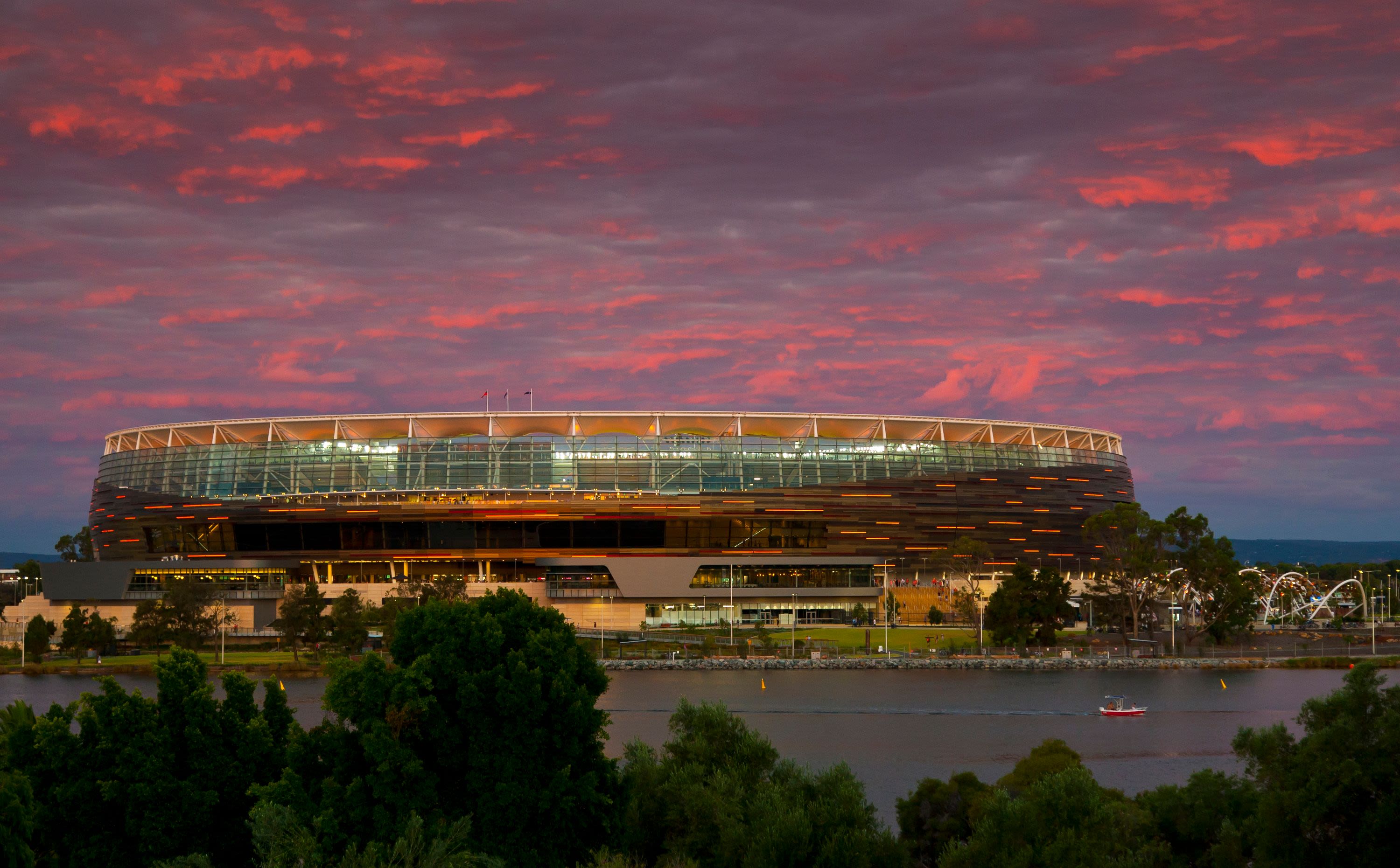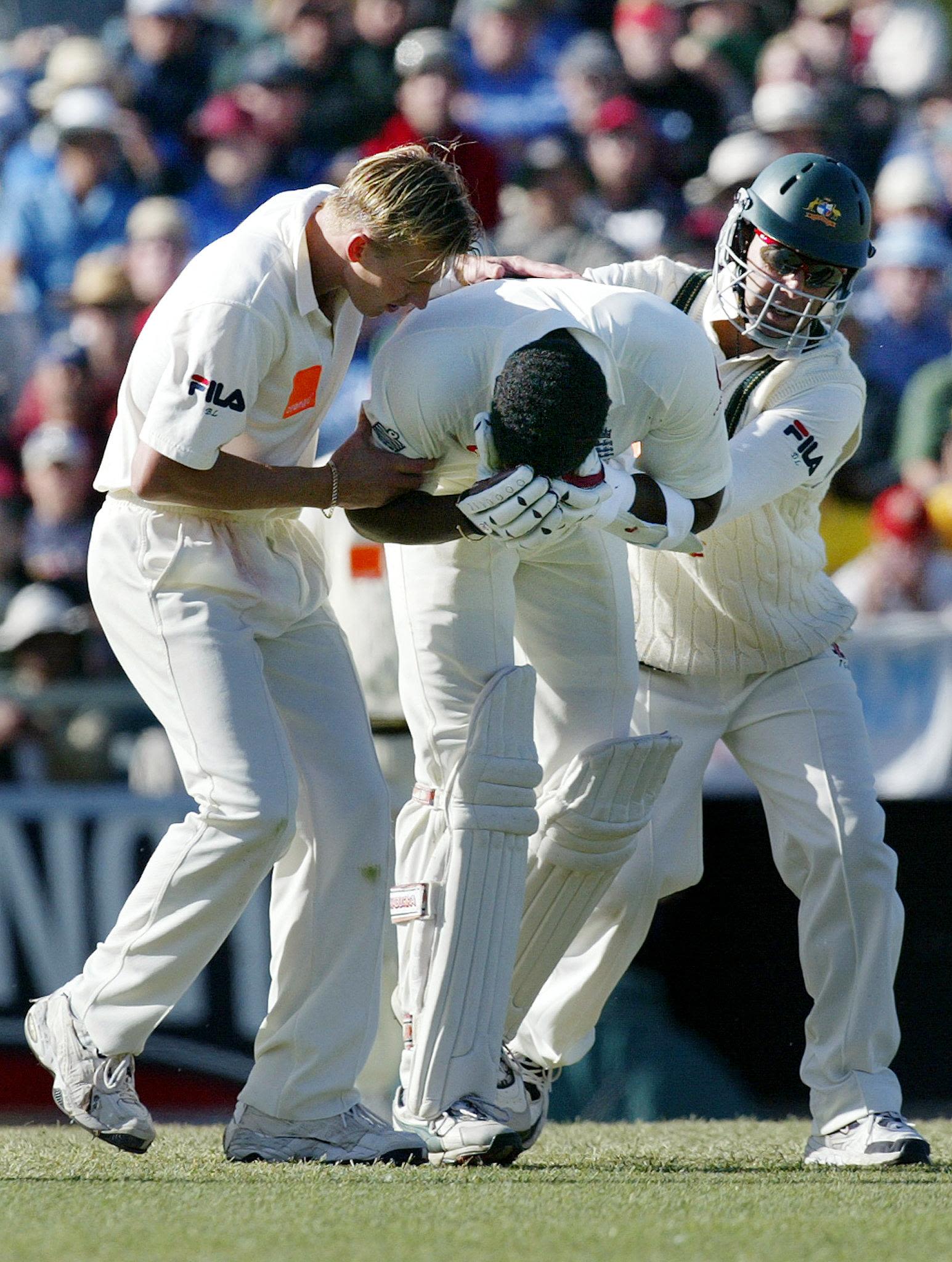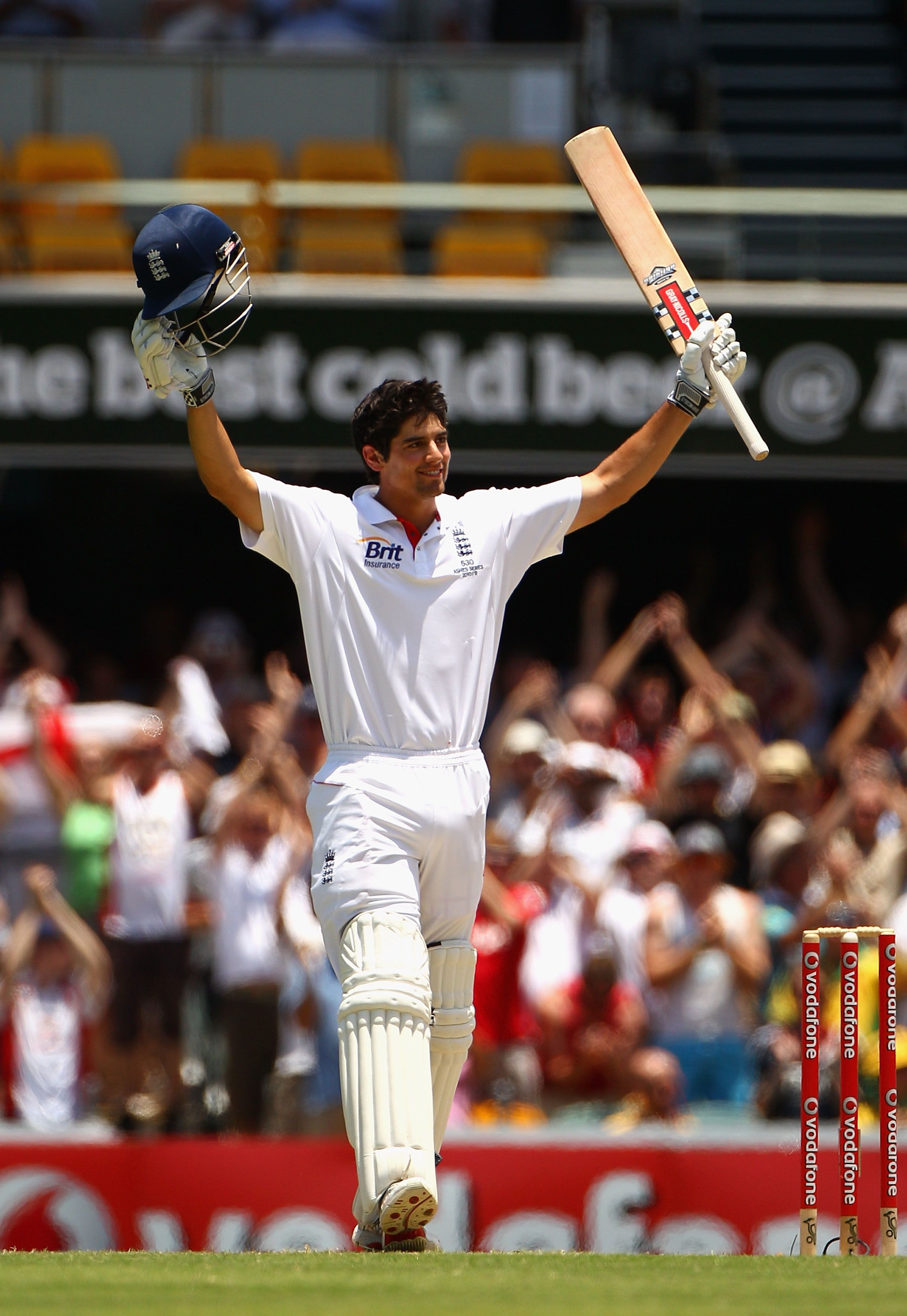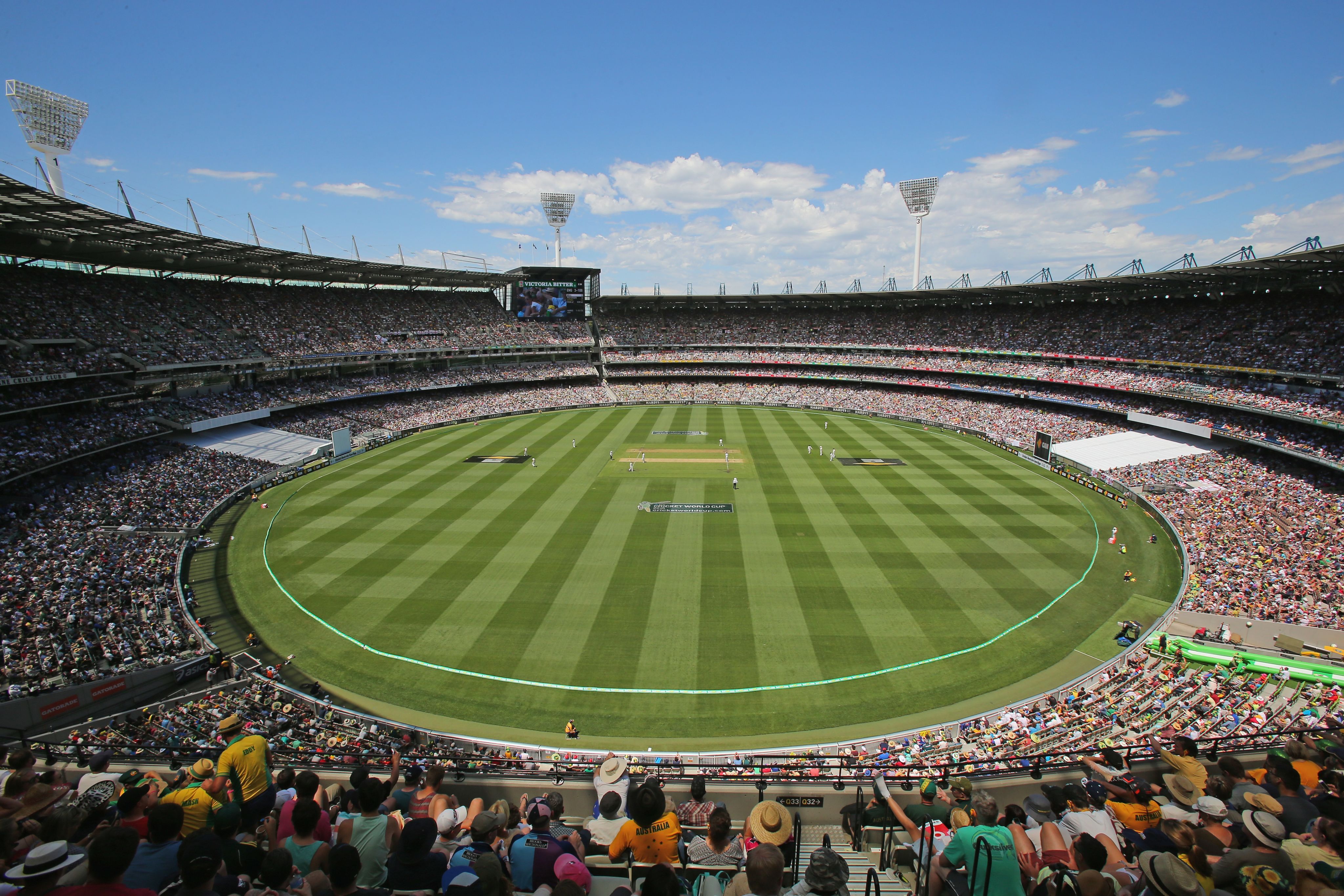
Ultimate Ashes 25-26 grounds guide
An Ashes series in Australia presents so many different challenges for English cricketers with the unique grounds and conditions a world away – literally – from anything they may have encountered before.
But what exactly are those challenges?
Where are the fastest cricket pitches in the world? Where do England have a good record? And where could spin play a part?
And what about the weather? Where is it hot? Where will conditions mean the ball may swing? And where might rain dampen everything and everyone down in the Ashes cauldron?
BBC Sport has crunched the data to provide the ultimate guide to Australia’s stadiums, sprinkled with some memorable Ashes moments from down under.
Enjoy!

First Test: Perth
Perth Stadium | |
|---|---|
Capacity | 61,266 |
Opened | 2018 |
Ashes Tests hosted | 0 |
For the first time since 1982, when ET, Annie and Rocky III were in the cinemas, the opening Ashes Test down under will be in Perth instead of Brisbane.
The Gabba, or Gabbatoir as it became known because of how dominant the hosts were in Brisbane, was the butcher’s shop of English dreams for so long – a first-Test mauling usually leaving the touring carcass ripe for Aussies to feast on for the rest of the Antipodean summer.
But while Brisbane came to define Australia’s Ashes fortress, Perth has been equally as treacherous for English cricketers: it’s hot, unrelenting and the pitches are regarded as some of the fastest and bounciest in the world.
England won’t be exposed to the Waca anymore, but the new, flashy multi-use Perth Stadium is just as ferocious in the middle.
Is Perth Stadium similar in characteristic to the Waca?
Batting average by session in Tests
Waca (11 matches) | Perth Stadium (4 matches) | |
|---|---|---|
Morning | 28.20 | 33.82 |
Afternoon | 35.81 | 31.60 |
Evening | 39.90 | 33.20 |
In a nutshell, yes!
The average height at which the ball reaches the batter from deliveries pitching just short of what is classed as a good length is 1.04m at both Perth Stadium and the Waca. That ranks the two venues second and third on the global list, behind Brisbane (1.06) and just ahead of Adelaide (1.02).
That crystallises the challenge facing England – the three bounciest pitches in the world are the venues for the first three Tests in this winter’s Ashes series.
But could that suit England with a pace attack which includes Mark Wood and Jofra Archer? For once, England will be taking considerably more than a knife to a gun fight.
There is also a school of thought that their Bazballing batters will enjoy the extra bounce and opportunities to score – Zak Crawley being one.
The average first-innings score at Perth Stadium is 374, with only the traditionally flat Adelaide Oval (396) beating it since 2000.
Interestingly, though, the average run-rate since 2000 is lowest in Perth of all this year’s Ashes venues (Sydney coming out on top here), suggesting England’s attacking tendencies may need to be tempered ever so slightly.
The captain who has won the toss in the five previous matches here has chosen to bat first – and on each occasion has won the match.
This is more food for thought for England skipper Ben Stokes, who famously loves to field first if the coin comes down in his favour.
England may decide not to pick a spinner in the first Test at Perth Stadium, with slower bowlers averaging more than 100 there in Test cricket.
Expect it to be fast and furious.
What about the Fremantle Doctor?
Doctor who?
Perth is famous for the cooling afternoon sea breeze, known as the Fremantle Doctor. When it sweeps in, it helps fast bowlers because it can generate more swing.
So much so, that there was a clear trend showing that batting was easier in the evening session of Tests at the Waca after the Doctor had breezed by (a session average of almost 40 runs per wicket compared to just shy of 36 in the afternoon).
That trend has not transferred to the new stadium, though, with batting averages per session similar (33 in the morning, 32 in the afternoon and 33 post tea).
Could the enclosed nature of Perth Stadium be responsible for putting the Doctor out of action?
What we can expect from the weather in Perth (Temperature °C)
21-25 November



Famous matches: Tudor stretchered off as England blown away
England have not played a Test match at Perth Stadium before, but they have suffered many a mauling at the Waca.
Back in 2002, England were blown away inside three days after being skittled for 185 and 223 on a lightning-fast pitch.
Brett Lee – one of the fastest bowlers of all time – was frighteningly quick in this match, delivering one ball which put England’s Alex Tudor in hospital.
After being bounced by the Surrey quick while batting, Lee tore in and administered his revenge with a fiery spell which ended with Tudor being felled by a brutish ball which burst through the batter’s grille.
Tudor was so badly hurt, he was stretchered off with the next batter in having to face Lee with fresh blood still on the pitch.
"It sort of freaked me out a little bit because I don't like seeing blood on the pitch and I went in to make sure that he was OK,” said the Aussie quick afterwards.
England went on to lose the match by an innings, the Ashes were lost at the earliest opportunity and Tudor never played Test cricket again.
Brutal, in every sense of the word.

Second Test: Brisbane
The Gabba | |
|---|---|
Capacity | 37,000 |
Opened | 1895 |
Ashes Tests hosted | 22 |
England wins | 4 |
Australia wins | 13 |
Draws | 5 |
Traditionally the venue for the first Ashes Test, this time the Gabba hosts the second.
And in a further change to convention, it’s going to be a day-night Test.
What does that mean? Well, don’t worry about clearing your diary for day five because the ball is likely to swing round corners here: the ultimate test of any batter’s technique.
Brisbane has traditionally been Australia’s fortress, particularly against England who haven’t won there since 1986. It’s only in recent years that touring teams have had success.
This imposing stadium, situated on Vulture Street, does some funny things to Englishmen.
It was here that Nasser Hussain famously chose to bowl first and watched Australia rack up almost 500, while four years later, Steve Harmison opened the Ashes with a delivery that was so wide it was caught by second slip Andrew Flintoff.
Mitchell Johnson terrorised England here in 2013 and few will forget the first ball of the last Ashes down under when Mitchell Starc bowled Rory Burns around his pads.
It’s a bear pit of a ground, too.
When England’s Simon Jones was stretched off with a career-threatening knee injury in 2002, a supporter gave him a less than sympathetic send-off.
“As I was carried off, someone in the crowd shouted that I was a ‘weak Pommie’ and threw a can of lager at me,” Jones recalled. “But I didn’t take it personally. The Gabba was like that. It’s a seriously impressive stadium with its own intimidating properties.”
It’s not going to be around forever, though. The Gabba is scheduled to be demolished after the 2032 Olympic Games, with cricket moving to a new 60,000-seater stadium in the Victoria Park area of Brisbane.
It’s going to swing, you say?
The Gabba is likely to be the most humid of the Ashes venues. Using data for the same time of year since 1995, BBC Weather has found Brisbane has a humidity average of 73% by 9pm in the evening.
In cricketing terms, that means the ball should swing more and help the bowlers more than the batters.
Dew is also expected to be a factor – that can speed up the outfield as the ball races along the greasy surface. It can also make the ball more difficult to grip, certainly for the spinners.
Humidity
Beware, Mitchell Starc
Starc is hard enough to face without the added threat of the pink ball and swinging conditions.
Arguably the best white-ball bowler in the world, he is without doubt the best with a pink ball.
He has taken 81 wickets in day-night Tests at an average of 17.08, with the next best being team-mates Pat Cummins and Nathan Lyon who both have 43 wickets with the pink ball.
Mitchell Starc’s pink-ball record in Tests
Span | Mat | Inns | Overs | Mdns | Runs | Wkts | BBI | BBM | Ave | Econ | SR |
|---|---|---|---|---|---|---|---|---|---|---|---|
2015-25 | 14 | 27 | 450.3 | 99 | 1,384 | 81 | 6-9 | 9-97 | 17.08 | 3.07 | 33.3 |
In his last Test outing, against West Indies in Kingston, Starc bowled the hosts out for just 27 in a day-night Test, taking 6-9 in the second innings.
How does he do it? Well, the man himself has been modest when asked about it in the past.
“Nothing changes too much,” he told Fox Sports in 2024. “I’m still running in trying to attack the stumps (and) trying to swing it. Some days it works. Sometimes it doesn’t. I don’t know (the reason why). I can’t tell you.”
When the lights aren’t on, pace still dominates in Brisbane, with almost 80% of wickets taken by the quicks – a record in Australia.
The Gabba - Best performances for Australia & England
Batting:
Team | Score | Balls | Date | |
|---|---|---|---|---|
M Clarke | AUS | 259* | 398 | 09.11.2012 |
A Cook | ENG | 235* | 428 | 25.11.2010 |
Bowling:
Team | Overs | Mdns | Runs | Wkts | Date | |
|---|---|---|---|---|---|---|
S Warne | AUS | 50.2 | 22 | 71 | 8 | 25.11.1994 |
S Broad | ENG | 24 | 3 | 81 | 6 | 21.11.2013 |



Famous matches: England pull off Great Escape
England fans were fearing the worst in 2010 when Andrew Strauss’ side followed on in the first Test 221 runs behind, but what came next is etched into Ashes folklore.
Led by Alastair Cook’s 235 not out, England batted for 152 overs to pile up a match-saving 517-1 declared.
Strauss scored 110 in an opening partnership of 188 with Cook and Jonathan Trott then took over with an unbeaten century of his own.
The Australia bowling attack was ground into the Brisbane dirt, with only part-time bowler Marcus North managing to pick up a wicket.
It no doubt took England into the next Test full of confidence, where they beat Australia by an innings and 71 runs in Adelaide on their way to a famous 3-1 win; their last series win down under.

Third Test: Adelaide
Adelaide Oval | |
|---|---|
Capacity | 53,500 |
Opened | 1871 |
Ashes Tests hosted | 33 |
England wins | 9 |
Australia wins | 19 |
Draws | 5 |
Perhaps the most batter friendly and flattest of all Australian pitches is in Adelaide, the venue for the third Test.
Known as Australia’s ‘City of Churches’, England have mixed memories of South Australia.
They did famously win there in 2010 but either side of that have been some crushing defeats.
Despite the baking heat of Perth and sub-tropical climate of Brisbane, Adelaide could be the hottest place England play – especially if the hosts’ batters begin to make hay.
Since 2000, the average first-innings score of 396 is the highest of all the Test grounds down under, and far ahead of Perth (374).
Average first-innings score since 2000
Ground | 1st inns |
|---|---|
Adelaide Oval | 396 |
Perth Stadium | 374 |
Sydney Cricket Ground | 357 |
Brisbane Cricket Ground | 336 |
Melbourne Cricket Ground | 325 |
Because of the flattish nature of the pitches, the average run-rate is lower than both Perth and Brisbane suggesting this is one of the Tests which might last into a fifth day.
England like a chase but if they choose to field first on winning the toss here, history tells us that 70% of teams go on to lose. Nowhere else in Australia is that figure so high.
Hang on, isn’t it getting more bowler friendly in Australia?
Yes, it is, and Adelaide is one of the three grounds (Perth and Sydney the others) where this is most pronounced.
While figures in first-class cricket have remained stable, in Test cricket those batting numbers have plummeted.
In the 2021-22 season, the average runs scored per wicket in Adelaide was almost 30 with it taking, on average, 68 balls for a bowler to break a partnership. Fast forward to the last Australian summer and the average runs per wicket was 20.86 and balls per dismissal was 32.
In Perth, that average runs per wicket figure has dropped from a high of 64 in 2022-23 to 21 last summer, while it’s gone from 33 to 18 in Sydney.
Adelaide Oval - Best performances
for Australia & England
Batting:
Team | Score | Balls | Date | |
|---|---|---|---|---|
D Warner | AUS | 335* | 418 | 29.11.2019 |
K Pietersen | ENG | 227 | 308 | 03.12.2010 |
Bowling:
Team | Overs | Mdns | Runs | Wkts | Date | |
|---|---|---|---|---|---|---|
M Johnson | AUS | 17.2 | 8 | 40 | 7 | 05.12.2013 |
M Hoggard | ENG | 42 | 6 | 109 | 7 | 01.12.2006 |



Famous match: Warne’s ‘greatest Test’
Yep. We’re still wondering how England lost the 2006 Test too.
They batted first and piled up a monster 551-6 declared, with Paul Collingwood hitting a double century and Kevin Pietersen crashing 158.
The Aussies replied with 513 of their own, but with run-scoring so painfully slow, the match looked like a certain draw heading into the fifth day.
England began the final day on 59-1. What happened next? Step forward, Shane Keith Warne.
In a typically spellbinding spell of leg-spin bowling, he took 4-49 in 32 overs, including the key wicket of Pietersen, as England slumped to 129 all out in 73 painful overs.
That left Australia needing 168 to seal a memorable win, which was completed when Mike Hussey hit through the covers.
"In 140 Tests this was the greatest I have played in," Warne remarked after the match.
And who are we to argue with ‘The King’.

Fourth Test: Melbourne
Melbourne Cricket Ground | |
|---|---|
Capacity | 100,024 |
Opened | 1853 |
Ashes Tests hosted | 57 |
England wins | 20 |
Australia wins | 29 |
Draws | 8 |
Melbourne is synonymous with Christmas cricket. It’s the home of the Boxing Day Test; an Australian sporting tradition like no other.
Almost 90,000 people will cram into the cavernous MCG, known locally as ‘The G’, for a fourth Test which many will hope has something more riding on it than England hoping to avoid a series clean sweep.
Since they won there in 2010, England have always turned up at the MCG with the series already over. Will this time be any different?
Since 2000, Australia have lost in Melbourne more times than any other home venue – being beaten there by South Africa, England and India twice.
The MCG does have the joint-lowest average first-innings score (302) alongside Sydney but holds the record outright since the turn of the century – it’s 325, followed by Brisbane (336).
Interestingly, though, Melbourne best suits England’s chase mentality - since 2000, 56% of the toss-winning captains who choose to field first win there.
However, no England bowler has a five-wicket haul there this century. That would surely have to change if Stokes’ side were to emerge with victory this year.
Big ground? What difference does that make?
It won’t surprise anyone to know ‘The G’ is the biggest of all Australia’s huge grounds, with a surface area of 18,736m2, ahead of the Gabba (18,405m2).
And while much of the pre-series chatter will be centred on pitches, ground dimensions are sure to play a part.
In layman’s terms, a batter must hit it further to get a six while the vast open spaces often mean more opportunities for runs.
So, while the average number of runs scored by six hits is 5% in Australia and 5.2% in England (since 2020), at Melbourne that figures drops to 3.3%.
But does that translate to more twos and threes as fielders chase leather? Yes, it does: 16.1% of scoring shots are twos here, with only Sydney (16.2%) and, interestingly, Old Trafford (16.9%) having a higher percentage of the usual Test grounds here and down under.
MCG - Best performances
for Australia & England
Batting:
Team | Score | Balls | Date | |
|---|---|---|---|---|
R Cowper | AUS | 307 | 589 | 11.02.1966 |
A Cook | ENG | 244* | 409 | 26.12.2017 |
Bowling:
Team | Overs | Mdns | Runs | Wkts | Date | |
|---|---|---|---|---|---|---|
A Mailey | AUS | 47 | 8 | 121 | 9 | 11.02.1921 |
W Rhodes | ENG | 15 | 0 | 68 | 8 | 01.01.1904 |



Famous match: England’s perfect Boxing Day
England cricket fans have not had a better Christmas than the one they savoured in 2010.
On the biggest day of the Aussie sporting calendar, the hosts were bundled out for just 98 before England closed day one on 157-0.
From there, it was a procession as England racked up 513 and bowled out Australia once again, this time for 258 on day four.
James Anderson and Chris Tremlett did the damage with the ball on day one, taking four wickets each, before Trott patiently compiled an unbeaten 168.
Tim Bresnan’s four second-innings wickets sealed victory and meant England went into the final Test in Sydney knowing a draw would secure the series. Instead, they peeled off another innings win.
It was later voted number five in England’s top 10 best Test wins of all time by BBC Sport readers.
Remembering the victory in 2010 at the MCG, ex-England captain Michael Vaughan said: “That first day in Melbourne has to be up there with one of the best days in the history of English cricket.
“The crowd was full of Australians and you couldn't hear the English - but England bowled first and all of a sudden, they got a few quick wickets and there were pockets of St George's flags that started to gather.
“It was immense to see all of the team celebrating as one [at the end]."

Fifth Test: Sydney
Sydney Cricket Ground | |
|---|---|
Capacity | 48,000 |
Opened | 1851 |
Ashes Tests hosted | 57 |
England wins | 22 |
Australia wins | 27 |
Draws | 8 |
The final Test of the Ashes down under will, once again, be in Sydney after the new year celebrations: a ground which, together with the MCG, has hosted more Ashes Tests than any other.
It has been the scene of some famous England wins over the years – series-clinching ones in 2010-11 (remember the sprinkler dance?) and equally-as-storied victories in dead rubbers.
England have won 22 of their 55 matches (39%) at this ground, their best record of any ground down under.
There’s just something about the SCG (Sydney Cricket Ground) which seems to rally England, even when they’re licking some pretty deep wounds.
For every great Aussie moment in Sydney, think Steve Waugh’s last-ball century in 2003, there’s plenty of English ones to counter it.
It has been the setting for two England Ashes hat-tricks – Johnny Briggs in 1892 and, more famously, Darren Gough in 1999. No Australian has achieved the feat there.
Meanwhile, the great Wally Hammond scored four centuries in Sydney, averaging 161.6, while in more recent years, it has seen tons for Vaughan, Ian Bell, Matt Prior, Cook and Jonny Bairstow.
The third day of the Sydney Test is known as Jane McGrath day, after the wife of Australia great Glenn McGrath. The ground is turned pink and the players walk to the middle for the start of play wearing pink caps, all to raise money for cancer charities.
Spin to win?
The SCG is historically the ground in Australia where spin has played the most part, with 35% of all wickets taken there by spinners.
However, statistically it is also the worst ground to bowl spin at since 2000 (average of 41.03).
Australia’s Lyon averages 39 for his 49 wickets in Sydney while, since the turn of the century, the legendary Warne averaged 37 in six Tests there.
Lyon apart, the top four spin bowlers with the most wickets at the SCG since 2000 are all leggies: Warne, Stuart MacGill, Anil Kumble and Danish Kaneria.
England don’t have a leg-spinner in their squad but if things do change, might they decide to call up Rehan Ahmed from the Lions?
SCG - Best performances for Australia & England
Batting:
Team | Score | Balls | Date | |
|---|---|---|---|---|
M Clarke | AUS | 329* | 468 | 03.01.2012 |
R Foster | ENG | 287 | 490 | 11.12.1903 |
Bowling:
Team | Overs | Mdns | Runs | Wkts | Date | |
|---|---|---|---|---|---|---|
S MacGill | AUS | 37 | 11 | 104 | 7 | 02.01.2001 |
A Caddick | ENG | 22 | 5 | 94 | 7 | 02.01.2003 |
Doesn’t it often rain in Sydney?
A quarter of games played at Sydney this century have been drawn – the highest of all grounds, though much of that can be put down to the weather.
It regularly rains when the cricket roadshow rolls into Sydney - at least 26 full days of play have been rained out at the Sydney Test since the 1880s, according to the ABC statistician Ric Finlay.
The next highest is Melbourne with nine days washed out. Sydney’s case isn’t helped by the scheduling since January is one of the wettest months in a city regarded as one of the rainiest in the country.



Famous match: Legends bid farewell
It’s difficult not to pick another England victory from 2010-11 here, but perhaps the most poignant of all days was when the curtain was brought down on the legendary playing careers of Warne and McGrath in 2007.
Regarded as two of the best bowlers cricket has ever seen, they bowed out winners as Australia completed a 5-0 series clean sweep – the first since 1920-21.
Warne took a wicket in each innings while McGrath picked up six in the match, with his last being Anderson – the man who eventually surpassed his record as the fast bowler with the most wickets in Test history.
Wearing their trademark baggy green (McGrath) and floppy hat (Warne) the legends soaked up the adulation as they strode off the sun-kissed Sydney outfield for one last time after bowling England out.
Victory was then sealed by Matthew Hayden and another retiring home hero, Justin Langer, to complete the perfect send-off for three of Australia’s best ever.
Credits
Written and devised by Marc Higginson
Sub-edited by Callum Matthews
Design by Andy Dicks
Images by Getty Images
Data provided by CricViz
More long reads
BBC Sport looks at the data to assess whether he will finally achieve his goal.
BBC Sport revisits an iconic moment in the history of The Ashes





































